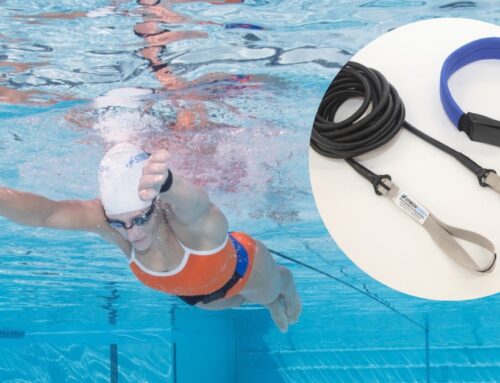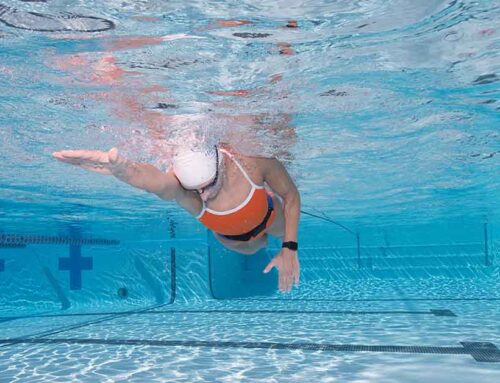 Deep water exercise has many benefits, including positive outcomes for those of us who are comfortable in deep water and for those of us who would rather have our feet touching solid ground. Deep water exercise is good for the body and the mind, so perhaps it’s time to reconsider our “shallow tendencies.”
Deep water exercise has many benefits, including positive outcomes for those of us who are comfortable in deep water and for those of us who would rather have our feet touching solid ground. Deep water exercise is good for the body and the mind, so perhaps it’s time to reconsider our “shallow tendencies.”
Let’s first discuss the types of exercise that can be performed in deep water. Deep water environments provide a full range of non-impact exercise challenges. Deep water is the perfect environment to create a total body workout because a participant can move freely in a three-dimensional space. Deep water exercises can be performed with or without flotation equipment. Don’t worry if you prefer to use flotation devices during your workout; wearing a flotation belt and/or flotation arm cuffs can substantially add to the effectiveness of a deep water workout by allowing participants to concentrate on muscle toning rather than on keeping their heads above water. The safest alternatives for flotation assistance in deep water consist of flotation devices that attach to one’s body, such as a belt, a vest or arm/ankle cuffs. Other handheld alternatives are functionally appropriate to use, such as flotation dumbbells, noodles or foam logs; however, some participants who are hesitant about their swimming skills may prefer to use flotation equipment that won’t accidentally drift away from them during the course of their exercise program. Deep water exercise environments are ideal for circuit training, interval training, and continuous aerobic training. Deep water is most excellent for mind-body exercise programs because exercising in deep water allows participants to focus on increased postural awareness and body-alignment skills.
Let’s next discuss the physical changes that occur in the body as a result of deep water exercise. Core muscles strengthen nicely over the course of consistent deep water training due to the increased muscular action required to maintain “neutral buoyancy.” Neutral buoyancy is obtained when neither your upper torso nor your lower limbs diverge from the straight line of your body when suspended in the water. In order to maintain vertical alignment, participants have to engage core muscles to prevent themselves from “tipping” frontwards or backwards. Participants who consistently perform deep water exercise also often experience a reduction in low back pain. Two factors influence this phenomenon. The first is that increased abdominal muscle strength helps to keep the torso lifted and reduces strain on the low back. Participants who perform consistent deep water exercise strengthen their abdominal muscles over time and hence have greater control over maintaining a lifted torso over longer time periods throughout the day. Additionally, underwater suspension without a “floor” (a.k.a. performing exercises without having your feet touch the pool bottom) reduces spinal compression and tension. Deep water programming is ideal for individuals who experience back strain; however, always be sure to talk to your medical professional before beginning a new exercise program to make sure that it will be safe for your body.
Let’s not forget that deep water exercise isn’t for every person and that a participant should never feel pressured into performing exercises that don’t support his or her comfort level, body, or fitness goals. For instance, deep water exercise with a flotation belt may not be recommended initially for participants who experience respiratory discomfort. Some participants find that the pressure of the flotation belt prohibits comfortable breathing during deep water exercise. In such cases, participants might be more comfortable in shallow water or might choose to wear arm or ankle flotation cuffs. In general deep water exercise is appropriate and beneficial for the majority of participants. If you are concerned about your ability to participate in deep water exercise programs, ask your medical health professional(s). Aquatic fitness is about enjoyment, health, and safety. Always participate in programming that feels right for you! That being said, make it a point to try “new-to-you” avenues of aquatic programming and/or other types of exercise programs; you just might find your new favorite routine and style!




